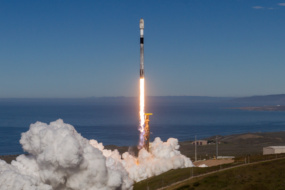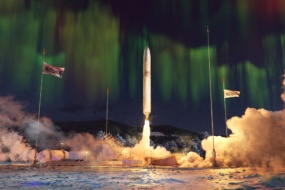The FAA has completed its review of SpaceX’s Starship mishap report—a key milestone for Starship to hit the skies again for the first time since its April 20 integrated flight test that ended with a bang (literally).
“The FAA has been provided with sufficient information and accepts the root causes and corrective actions described in the mishap report,” the FAA wrote in a letter to SpaceX.
The to-do list: The final investigation—which SpaceX led with FAA oversight—identified 63 corrective actions that the company would need to implement before launching again. The large ticket corrective action items include:
- Fuel leaks and fire mitigation improvements
- Launchpad redesign (i.e., water deluge system)
- Electric thrust vector control system
- Improving flight termination controls
SpaceX has been working on implementing the corrective actions since its first integrated flight test nearly five months ago. The company believes it has completed the improvements and is ready to go.
“Congrats to SpaceX for completing & documented (sic) the 57 items required by the FAA for Flight 2 of Starship! Worth noting that 6 of the 63 items refer to later flights,” Elon Musk wrote Sunday on X (formerly known as Twitter).
SpaceX has made 1,000+ changes to Starship and the launch system tower ahead of its second Starship flight.
Final boss: SpaceX still needs to apply for and receive a license modification from the FAA before getting the green light for the next Starship launch. SpaceX and the FAA have not provided a timeline, and the agency emphasized in a bolded statement, “The closure of the mishap investigation does not signal an immediate resumption of Starship launches at Boca Chica.”
Leaks and fires: In addition to the structural failure of the launch pad and a delay with the termination system, Starship also suffered significant fires in the engine section.
“During ascent, the vehicle sustained fires from leaking propellant in the aft end of the Super Heavy booster, which eventually severed connection with the vehicle’s primary flight computer,” SpaceX said in a statement on Friday.
The fire caused a loss of comms with the Starship engines, which ultimately led to a full loss of vehicle control. Many of the identified corrective measures addressed issues related to fuel leaks and the subsequent fire.
Starship stacked: Starship sits fully stacked on its orbital launch mount in Boca Chica, TX. The Super Heavy Booster completed a static fire on Aug. 25—which also successfully tested its new water deluge pad protection system. The launch vehicle will need to be de-stacked one more time to configure its flight termination system before launch.




